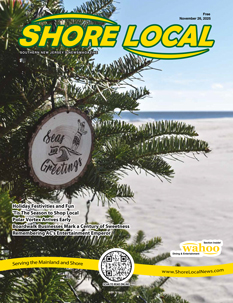Drink Up!
By David Setley
Summer heat means that sparkling wines are flying off the shelves. You are likely familiar with Champagne and Prosecco, but have you enjoyed Spain’s contribution to sparkling wine? July 12 is International Cava Day this year, providing the perfect opportunity to pick up a bottle.
For Champagne to be called Champagne, it must be made in the Champagne region of France and it must be made with specific grapes of that region, primarily chardonnay, Pinot noir and Meunier. Similarly, to be a certified DOC (Denominazione di Origine Controllata, or, Controlled Designation of Origin) Prosecco, the wine must be produced in the Prosecco region in the northeastern Veneto and Friuli-Venezia Giulia regions of Italy and made primarily from Glera grapes grown there. Cava is the same. Cava sparkling wine must be produced in Catalonia, Spain in the northeastern region of Penedès, primarily using the Macabeo, Parellada, and Xarel·lo grapes.
Let’s talk about production. Prosecco is produced through a single fermentation process, whereas Champagne and Cava wines are produced through double fermentation. For all three wines, the grapes are crushed after harvesting and made into wine through fermentation. In fermentation, yeast consumes the natural sugar in the juice and turns it into alcohol (wine) and carbon dioxide. For Prosecco, the carbon dioxide is captured within a pressurized tank, creating the bubbles and making it a sparkling wine. For Cava and Champagne, the carbon dioxide gas is allowed to escape during the first fermentation process. The wine is then bottled and aged. After the initial aging, the bottles are uncorked so that additional yeast and sugar may be added before being recorked. The amount of additional sugar helps determine if the end product is a brut (dry), semi-dry, or sweet sparkling wine. The wines are then aged for a second time in the bottles. Cava is typically aged another nine months, while Champagnes typically age for 15 or more months. This second fermentation process is called the Méthode Champenoise or, more recently, the Méthode Traditionnelle.
Now, price. Of the three wines, Champagne is the most expensive. Cava is significantly less, and Prosecco is usually even a bit less expensive than Cava. Why? It comes down to reputation and the fermentation/aging processes described above. Champagne is known worldwide as the most exclusive sparkling wine and is generally aged the longest, which adds to the cost of production. Cava is much less known with a shorter aging timeframe, but it still follows the double fermentation process. Although Prosecco is more known than Cava, the single fermentation process and the shorter aging translates to a significantly lower cost of production. Hence, the price differences.
On to taste! When it comes to bubbles, Champagne and Cava are very similar. Both sparkling wines have fine and persistent bubbles. Prosecco bubbles tend to be larger and less persistent. Of the three, Prosecco wine is the lightest with an aroma and flavor dominated by lemon and green apple. Champagne’s profile is more acidic and is frequently described as yeasty, or brioche. Cava has more minerality with lighter fruit notes and is typically drier than Prosecco. Cava is great by itself but also pairs well with food. Many Europeans drink sparkling wine as an accompaniment to a meal. Try Cava with appetizers, oysters or other seafood, roasted vegetables, chicken, pork, charcuterie, or pasta with white sauce. My favorite is a sparkling Cava with Indian food or sushi.
Finally, the best part: recommendations. Dibon Cava Brut Reserve is a very reasonably priced example of Cava wine that has earned a score of 88 from both Wine Enthusiast and Wine Advocate. It is crisp and fresh with lots of bubbles and a balanced acidity. You will get notes of ripe apples and pears with a pleasant minerality. In addition, this wine is organic and vegan-friendly. Cava is also available in rosé, and the Dibon Brut Rosé is an excellent example. This wine is produced using the same basic process, but with skin contact to transfer color and flavors to the wine. The color is clear red and is darker than a Provence-style rosé with the aroma and flavors of raspberry and black current.
Or, the Caves Naveran Cava Brut is a classic! The Naveran family has been making wine in the Penedès for more than 100 years. Their Cava is produced from 100% estate-grown and organically farmed grapes. This wine was aged at least 12 months, longer than is typical for Cava, resulting in a more intense aroma of Meyer lemon and melon with notable notes of minerality. This wine is also organic and vegan-friendly.
The Roger Goulart Gran Reserva Cava 2019 is my must-try recommendation. Roger Goulart Winery was established in 1882 and has earned a reputation as the premier producer of Cava wine. Goulart was one of the first wineries in Spain to utilize the Méthode Traditionnelle. This wine is aged in the caves of the Goulart Winery for 36 months. The winemaker’s attention to detail and the extended aging of this Gran Reserva Cava results in light notes of tropical and stone fruits with a yeasty finish that is typically found only in Champagnes. In fact, your guests may think you are serving them Champagne with this one. The lower price will be our little secret.
I hope this article has given you a better understanding of Cava and has encouraged you to add some sparkle to your summer parties or porch time. As always, contact me with any questions at dsetley@passionvines.com, or stop into the store. Until next time, “Salud” and Happy Wining!
David Setley is enjoying his retirement from higher education as a wine educator and certified sommelier at Passion Vines in Somers Point, New Jersey.











